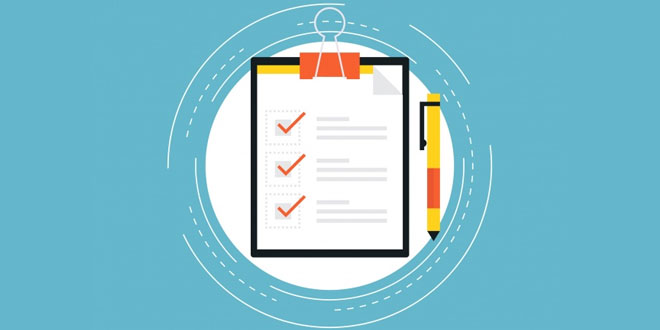Before attempting to answer the questions on a passage, it is necessary to read the passage again and again so that a general idea of the subject of the passage becomes clear. Once the passage is clear, it is easy to answer the answers of the questions.
One should also keep the following points in mind before answering the questions set on a given passage:
- Read the passage quickly to have some general idea of the subject matter.
- Read the passage again and underline the important points.
- Read the questions and try to know what has been asked.
- Read the passage again and underline the portions where the probable answers may be available.
- Use, as far as possible, your own words to answer the questions in a precise and brief way.
- Always use complete sentences while answering a question.
- If you are asked to give the meaning of some words or phrases, try to express your idea, in your own words, as clearly as possible.
- Don’t give your own opinions or comments about anything unless you are asked to do so.
Unseen Comprehension Passages Set II – [01]
Read the following passage carefully:
Technological Wonders
Have you ever noticed when you step into an elevator that next to the buttons showing the floor numbers, there are small plates with a series of raised dots and bumps? Did you ever wonder what those bumps and dots mean and why they are there? When you run your fingers over those plates, you feel the ridges. When blind people touch them, They read the floor numbers.
Who invented this elaborate setup of bumps and dots that comprise an entire alphabet and numerical system that allows blind people to read with their fingers? was it a distinguished scientist, or perhaps a famous artist?
Actually, this system, which is called braille, was created by a 12-year-old, blind French boy and was named after him. Louis was not always blind. He become blind by accident. Louis Braille was born on January 4, 1809 in a small country village near Paris called Coupvray . His father was a leather worker who made harnesses and other leather goods. One day, when he was just three years old, Louis was in his father’s leather workshop.
Like many young children, Louis enjoyed imitating his father. He was fiddling with awl, a small tool with a round wooden handle and a sharp, pointed metal tips that is used to punch holes in leather. While he was playing, the awl slipped and poked Louis in the eye. A doctor treated the would as best he could and patched the eye. But the eye became infected and the infection spread to the other eye. Within a short time, young Louis was totally blind in both eyes.
In those days, many blind people become beggars or performers in sideshows. But Louis’s parents refused to allow their son’s disability to get in the way of his studies or his life. Louis attended school like his brothers and sisters, relying on his creativity, intelligence and drive to overcome obstacles. To help him navigate the village, his father made him canes. The local priest taught him to use his other senses to learn: his hearing to distinguish the cells of different birds and his sense of smell to identify different plants and flowers. Louis was one of the brightest students in his school.
In 1892, at age 10, Louis earned a scholarship to attend the Royal Institute for Blind Youth in Paris, the first school in the world devoted to blind children. For Louis, going to the school meant leaving his family and the village he knew well, where he felt safe. But Louis and his family knew the school offered him the best opportunity to get an education and lead a successful life. There he excelled in studying history, math, science and grammar, but he proved especially gifted at music. Louis became an accomplished pianist and organist. He even got a paid job as organist, playing in a small church near the institute.
One day Louis learned about the work of a former French army captain named Charles Barber. Captain Barbier had invented something called “night writing,” a code of 12 raised dots and dashes that allowed soldiers to communicate with one another at night without using lights that would alert the enemy to their location. The Soldiers could “feel” the messages with their fingers and keep safe. The code turned out to be too complex for the soldiers, but it inspired Louis Braille. Louis simplified the system, reduced the series of dots from twelve to six and eliminated the dashes. By the time he was 20, Louis published his first a alphabet for the blind, a system he continued to work on and perfect.
The world was slow to accept Louis Braille’s innovation. Indeed, during his lifetime, his method was not widely accepted. Louis Braille died at the young age of 43 from tuberculosis, a devastating respiratory disease. He was buried in his home village of Coupvray.
In time, Braille’s method become accepted around the world. “Braille” alphabets were created in languages spanning the globe. Today, we find them not only on elevator plates, but also on computers and cell phones. And the name Louis Braille stands for innovation and determination.
A. On the basis of your reading of the above passage, Complete the following statements briefly:
- Braille was created by a ______________.
- Those days, many blind people ______________.
- At the age of ten, Louis went ______________.
- A world from the passage which means the same as ‘to find the way’ is ______________.
B. Answer the following questions:
- Who was Louis? How did he become blind?
- How did Louis’ parents motivate him to overcome his disability?
- What inspired Louis publish alphabets for the blind?
- How has the world accepted Braille’s innovation in different spheres?
 Class Notes NCERT Solutions for CBSE Students
Class Notes NCERT Solutions for CBSE Students

